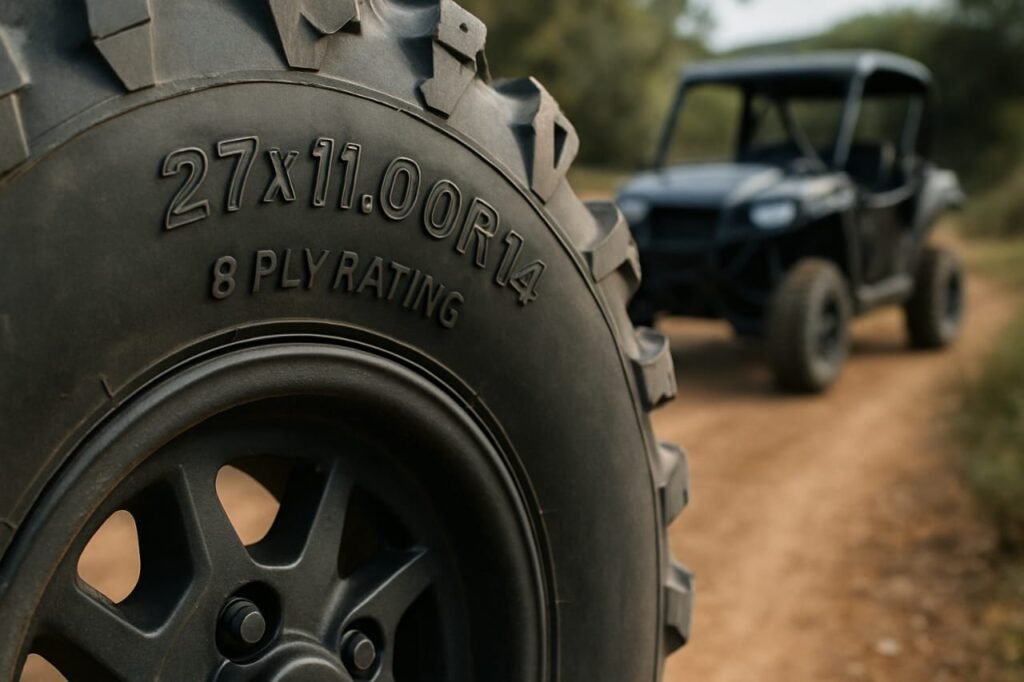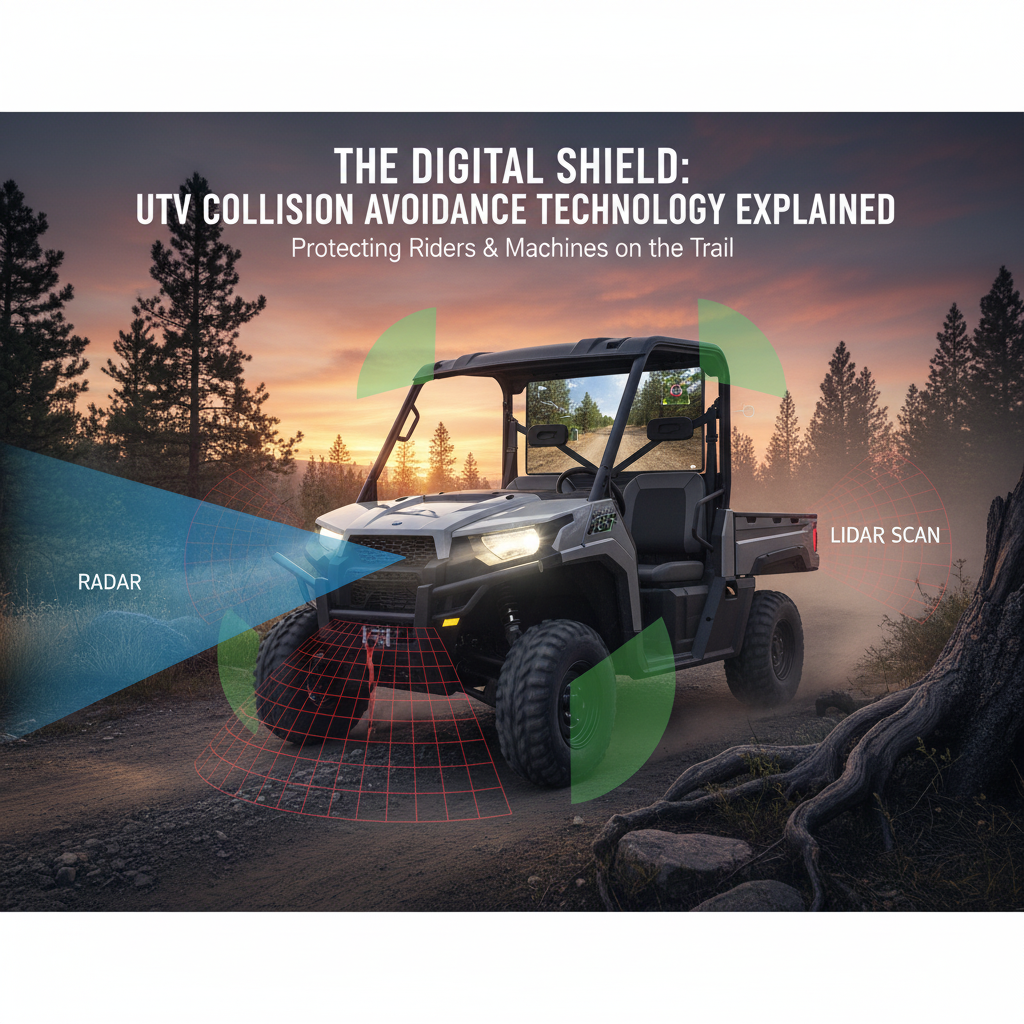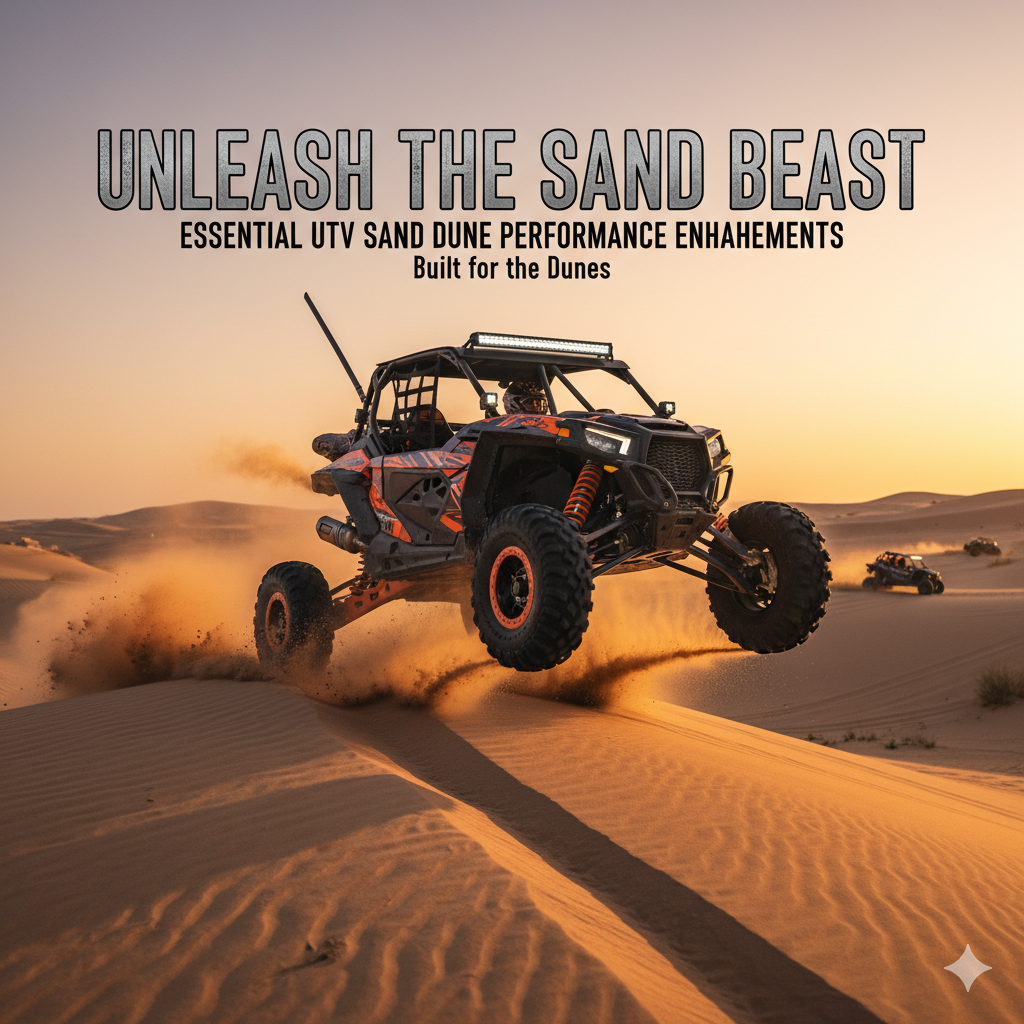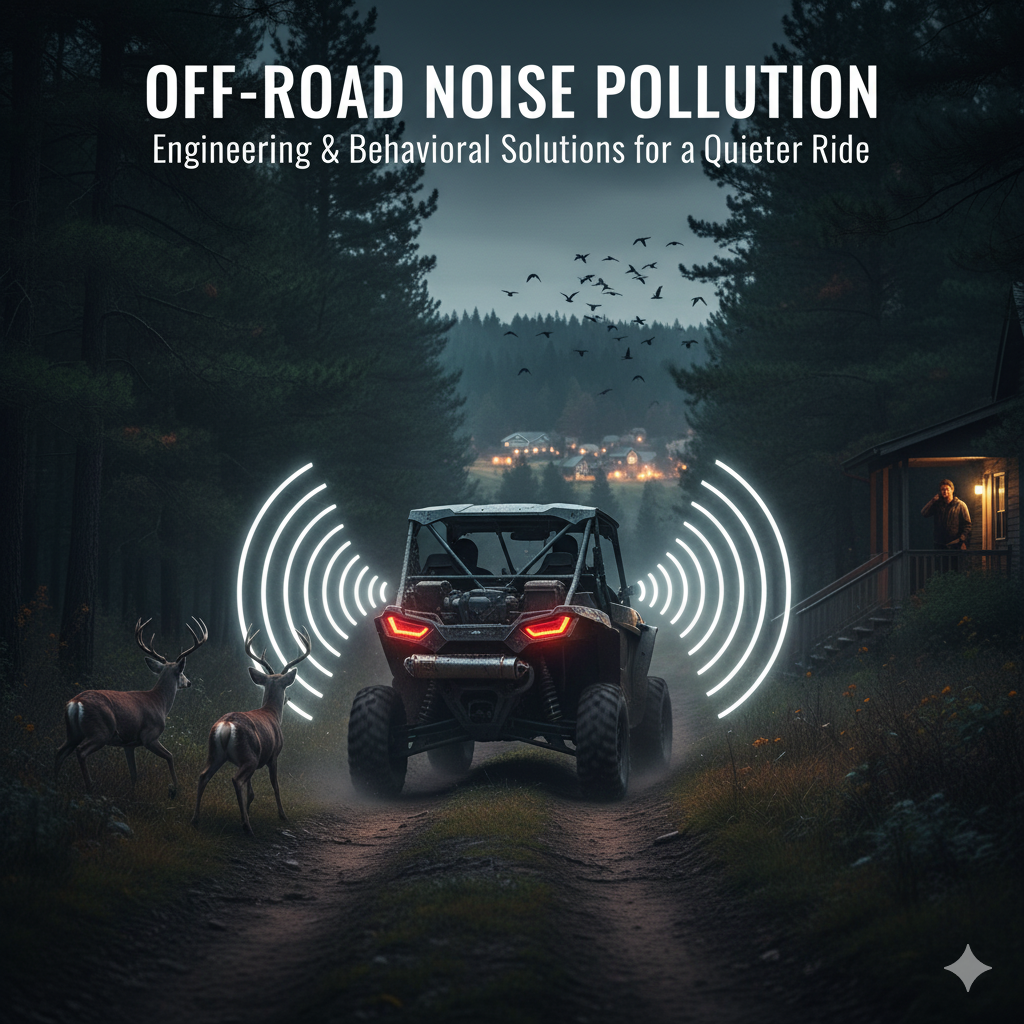As a UTV owner, you know that tires are your machine’s direct connection to the terrain.
They dictate everything from traction and handling to ride comfort and ground clearance.
But if you’ve ever looked at a UTV tire’s sidewall, you might have felt like you were staring at a secret code: a series of numbers and letters that seem to make no sense.
Trust me, you’re not alone! Many enthusiasts find UTV tire specifications confusing, but understanding them is crucial for making informed decisions about your ride.
I’ve spent countless hours researching, testing, and talking to experts about UTV tires, and I’ve come to realize that deciphering these codes is simpler than it seems.
It’s like learning a new language, and once you grasp the basics, a whole new world of performance optimization opens up.
In this comprehensive guide, I’ll break down everything you need to know about reading UTV tire specifications.
We’ll cover the common numbering systems, what each number and letter signifies, and how this information can help you choose the perfect tires for your specific UTV, riding style, and the terrains you love to conquer.
Let’s roll into understanding your UTV’s most vital component!
Understanding the Three-Number System: The Most Common Format
The most common way UTV tire sizes are expressed is through a three-number system, often separated by an “x” or a dash.
This format is straightforward once you know what each number represents. Let’s take a common example: 27×10-14 or 27x10R14.
Here’s the breakdown:
First Number (27): Overall Tire Diameter (Height) in Inches
This number indicates the approximate height of the tire when it’s inflated and not under load. In our example, the tire is approximately 27 inches tall. A taller tire generally provides more ground clearance, which is beneficial for clearing obstacles on the trail. However, going too tall can affect your UTV’s gearing, power, and potentially require suspension modifications or a lift kit to prevent rubbing. [1]
Second Number (10): Tire Width in Inches
This number represents the approximate width of the tire from sidewall to sidewall. In our example, the tire is 10 inches wide. A wider tire can offer a larger contact patch with the ground, potentially improving traction, especially in sand or mud. However, excessively wide tires can lead to increased steering effort, rubbing issues, and may not be suitable for narrow trails. [2]
Third Number (14): Wheel Diameter (Rim Size) in Inches
This number tells you the diameter of the wheel (or rim) that the tire is designed to fit. In our example, the tire is designed for a 14-inch wheel. It’s crucial that this number matches the size of your UTV’s wheels. You cannot mount a 14-inch tire on a 12-inch wheel, for instance. This number is often preceded by an “R” (e.g., 14R) which indicates a radial construction, or a “D” (e.g., 14D) for bias-ply construction, though the letter is sometimes omitted if the construction is implied. [3]
So, a 27×10-14 tire means it’s approximately 27 inches tall, 10 inches wide, and designed to fit a 14-inch wheel. Simple, right?
This system gives you a quick overview of the tire’s physical dimensions and its intended wheel size.
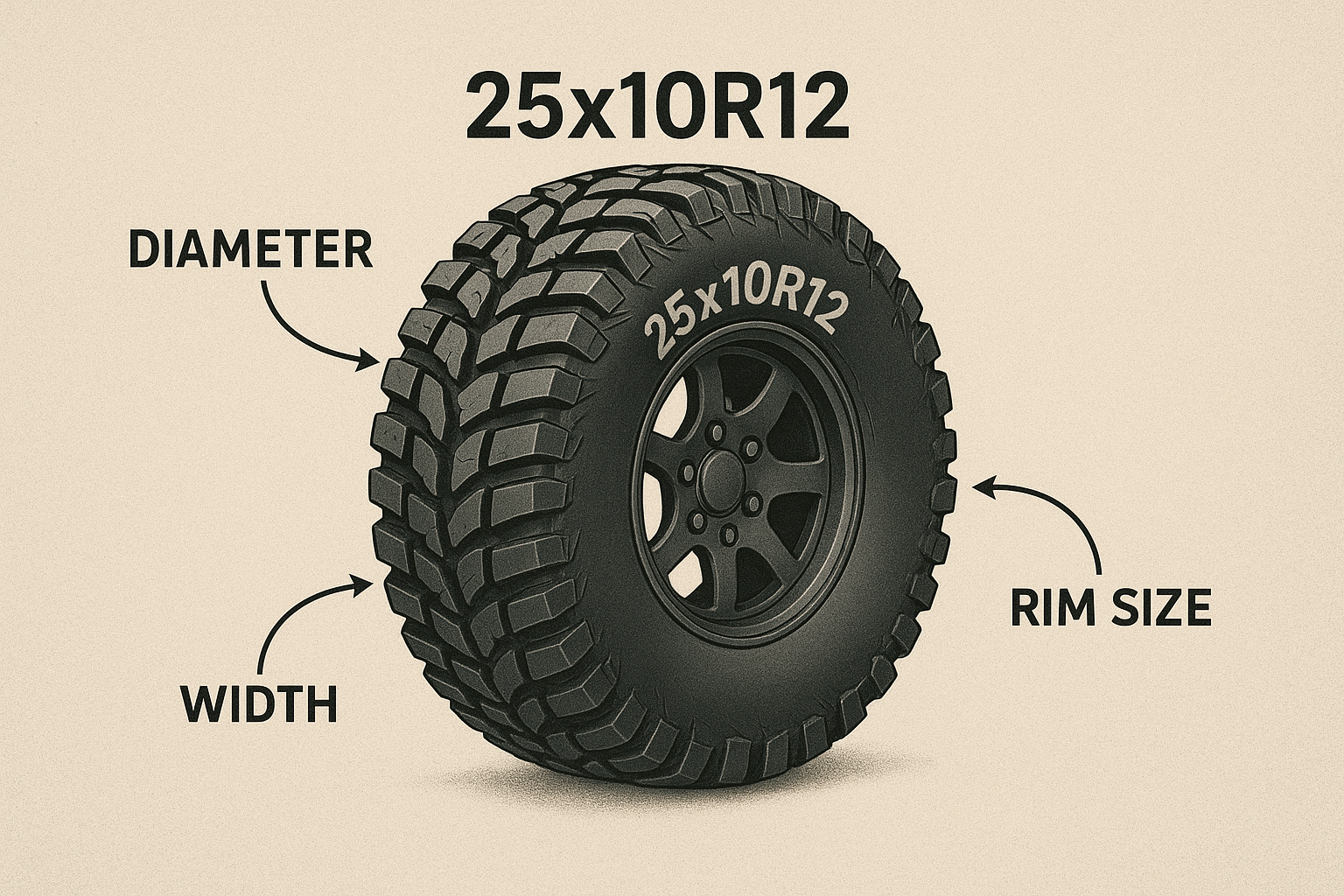
Radial vs. Bias-Ply: Understanding Tire Construction
Beyond the basic dimensions, one of the most important specifications to understand is the tire’s construction type: radial or bias-ply.
This refers to how the internal layers (plies) of the tire are arranged, and it significantly impacts the tire’s performance characteristics.
Radial (R):
- Radial tires have plies that run perpendicular to the direction of travel, with a separate belt layer under the tread. This construction allows the sidewall and tread to work independently. Radial tires generally offer:
-
- Smoother ride: Better absorption of bumps and irregularities.
- Better handling and stability: The tread remains flatter on the ground, providing a larger, more consistent contact patch.
- Longer tread life: More even wear due to less tread squirm.
- Better fuel efficiency: Less rolling resistance.
- Typically more expensive. You’ll often see an “R” in the tire size (e.g., 27x10R14) indicating a radial tire. Radial tires are excellent for high-speed riding, long distances, and varied terrain where comfort and precise handling are priorities. [4]
Bias-Ply (D or sometimes no letter):
- Bias-ply tires have plies that crisscross diagonally from bead to bead. The sidewall and tread work together as a single unit. Bias-ply tires generally offer:
-
- Greater puncture resistance: Stronger sidewalls due to the overlapping plies.
- Better load carrying capacity: Stiffer construction can handle heavier loads.
- More affordable. You might see a “D” in the tire size (e.g., 27x10D14) or sometimes no letter at all, especially on older or more utility-focused tires. Bias-ply tires are often preferred for extreme rock crawling, heavy utility work, or very aggressive mudding where maximum durability and load capacity are more important than ride comfort or high-speed handling. [5]
Choosing between radial and bias-ply depends heavily on your primary use for the UTV.
For recreational trail riding and general use, radials are often the preferred choice due to their superior ride quality and handling.
For dedicated work or extreme off-roading where durability is paramount, bias-ply might be a better fit.
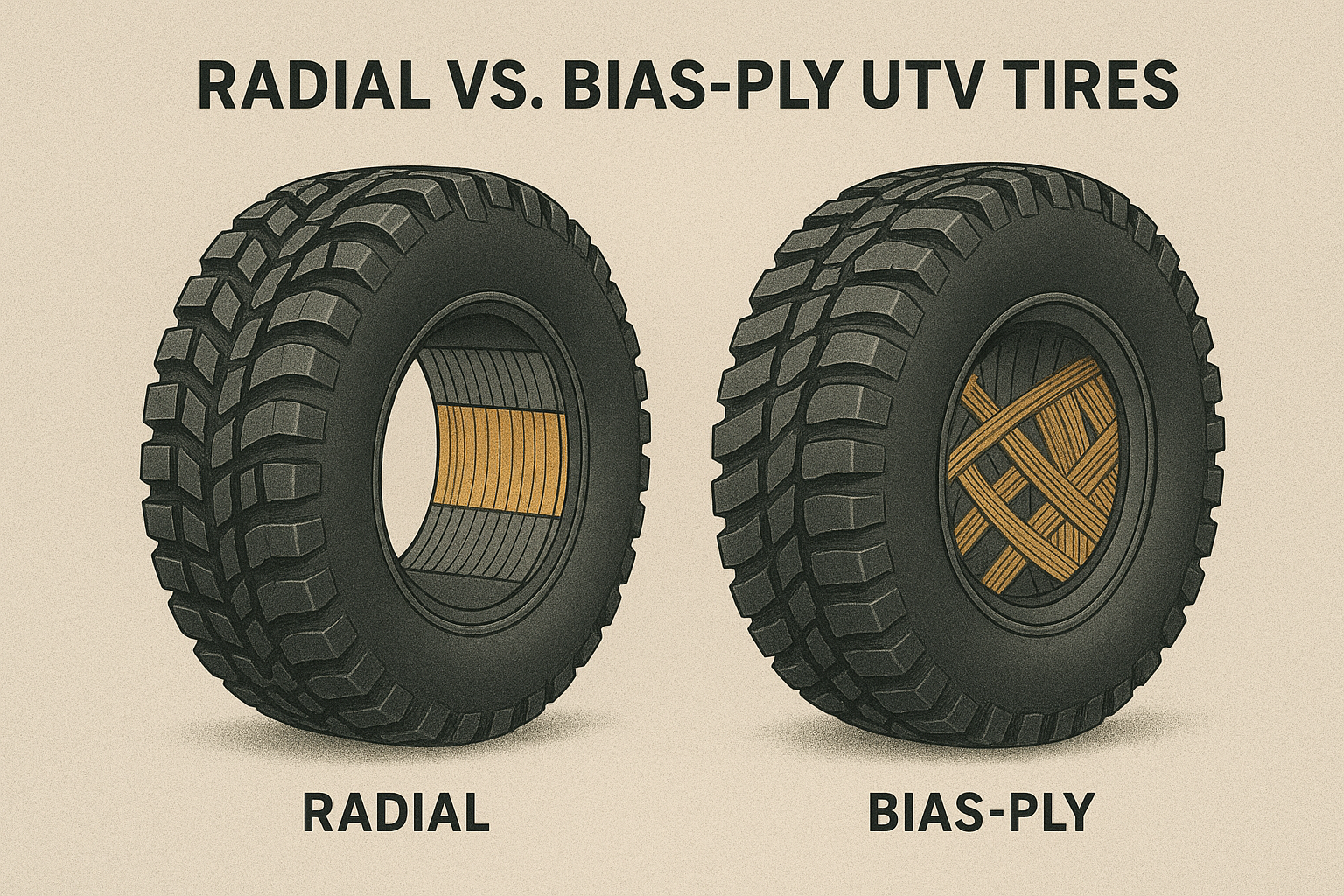
Ply Rating and Load Range: How Tough is Your Tire?
Another critical piece of information on a UTV tire sidewall is its ply rating, sometimes referred to as load range.
This indicates the strength and durability of the tire, particularly its resistance to punctures and its ability to carry weight.
- Ply Rating: Historically, this referred to the actual number of cotton plies (layers) in the tire casing. However, with modern materials like nylon and polyester, a 6-ply rated tire doesn’t necessarily have six plies. Instead, it indicates the tire’s strength equivalent to a certain number of cotton plies. Higher ply ratings mean a stronger, more durable tire, but also typically a heavier and stiffer one. Common UTV tire ply ratings range from 4-ply to 10-ply or even higher. [6]
- Load Range/Load Index: This specification directly relates to the maximum weight a tire can safely support at a given inflation pressure. While less common on UTV tires than on automotive tires, some manufacturers might provide a load index. Always ensure the combined load capacity of your tires exceeds the maximum weight of your UTV when fully loaded with passengers, cargo, and accessories. Overloading tires can lead to premature wear, handling issues, and dangerous blowouts.
For most recreational UTV use, a 6-ply or 8-ply rated tire offers a good balance of durability and ride comfort.
If you frequently ride in extremely rocky terrain, through sharp debris, or carry heavy loads, a 10-ply or higher might be a worthwhile investment for increased puncture resistance.
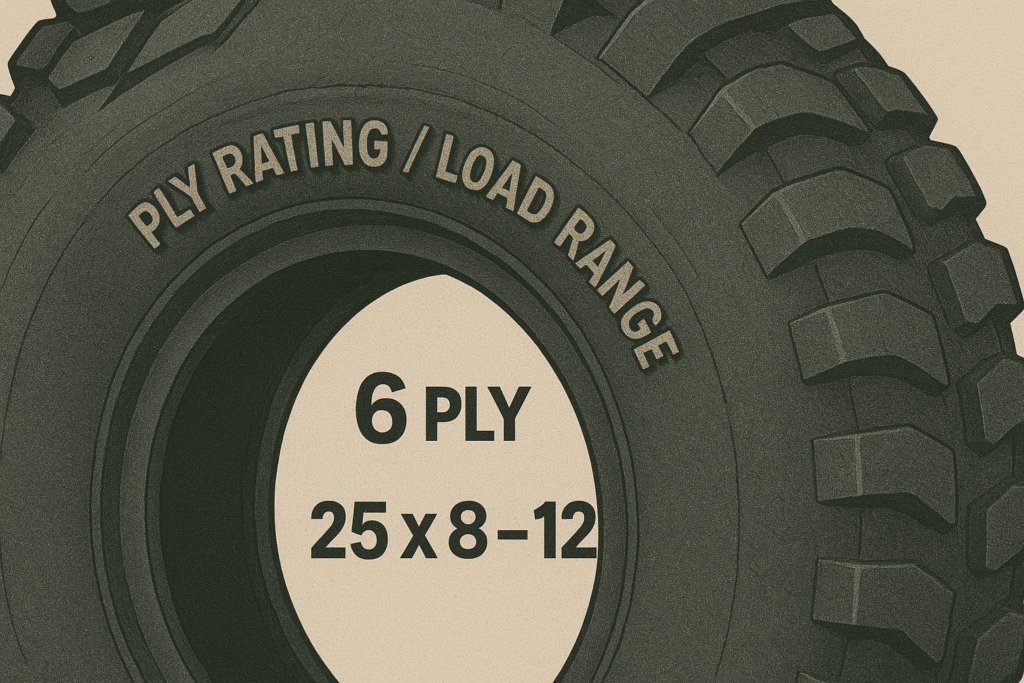
Tread Patterns and Terrain-Specific Tires: Matching Your Ride to the Ground
The tread pattern on your UTV tire is arguably the most visually obvious specification, and it plays a massive role in how your UTV performs on different surfaces.
There isn’t a one-size-fits-all tread pattern; instead, tires are designed with specific terrains in mind.
- All-Terrain (AT): These tires feature a versatile tread pattern with medium-sized lugs and a balanced void ratio (the space between the lugs). They are designed to perform well across a variety of surfaces, including hard-packed dirt, loose gravel, light mud, and some rocks. AT tires are a great choice for general trail riding and mixed-use applications, offering a good compromise between traction, ride comfort, and durability. [7]
- Mud (MT): Mud tires are characterized by aggressive, widely spaced, deep lugs (also known as paddles or cleats). The large voids between the lugs allow them to dig into and shed mud effectively, providing maximum traction in sloppy conditions. However, these tires can be noisy and provide a rougher ride on hard-packed surfaces, and their aggressive lugs can wear quickly on pavement. [8]
- Sand (Paddle): Specifically designed for sand dunes, paddle tires feature large, scoop-like paddles that run across the tire’s circumference. These paddles scoop and propel sand, providing incredible forward traction in soft, loose sand. They are not suitable for any other terrain and should only be used for dedicated dune riding. [9]
- Rock (RC): Rock crawling tires often have a softer rubber compound, large, irregular lugs, and reinforced sidewalls. Their tread patterns are designed to grip and conform to uneven rock surfaces, providing maximum traction and durability in extreme rocky terrain. They often feature siping (small cuts in the lugs) for increased grip on wet rocks. [10]
-
Hard-Pack/Desert:
These tires typically have a tighter tread pattern with smaller, more numerous lugs. They are designed for high-speed desert racing or hard-packed trails, offering excellent stability, precise steering, and good wear characteristics on firm surfaces. They may not perform as well in deep mud or loose conditions.
Choosing the right tread pattern for your primary riding environment is crucial for optimizing performance, safety, and tire longevity.
If you ride in varied conditions, an aggressive all-terrain tire might be your best bet.

Other Important Markings: Don’t Overlook the Details
While the three-number system, construction type, and ply rating are the most prominent specifications, UTV tire sidewalls often contain other important markings that provide valuable information about the tire’s capabilities and compliance.
DOT (Department of Transportation) Code:
- This code indicates that the tire meets the safety standards set by the U.S. Department of Transportation. It also includes information about the manufacturing plant, tire size, and date of manufacture (a four-digit code, e.g., 1524 means the 15th week of 2024). While many UTV tires are not DOT-approved for street use, some are, and this marking is crucial if you plan to ride on public roads where legal. [11]
Max PSI (Pounds per Square Inch):
- This indicates the maximum cold inflation pressure the tire can safely handle. It’s important to note that this is the maximum pressure, not necessarily the recommended operating pressure for your UTV. Always refer to your UTV’s owner’s manual or the tire manufacturer’s recommendations for optimal operating pressures, as these can vary significantly based on load, terrain, and riding style. Over-inflating can lead to a harsh ride and reduced traction, while under-inflating can cause tire damage and poor handling. [12]
Load Index and Speed Rating (Less Common on UTV Tires):
- While more prevalent on automotive tires, some UTV tires, especially those designed for higher speeds or heavier loads, might include a load index and speed rating. The load index is a numerical code that corresponds to the maximum load a tire can carry at its maximum speed. The speed rating is an alphabetical code that indicates the maximum speed at which the tire can carry its rated load. For example, an ‘H’ speed rating means the tire is rated for speeds up to 130 mph. For most recreational UTV use, these ratings are less critical than the ply rating, but it’s good to be aware of them. [13]
Directional Arrows:
- Some UTV tires are directional, meaning they are designed to rotate in a specific direction for optimal performance (e.g., for shedding mud or maximizing traction). These tires will have an arrow on the sidewall indicating the correct rotation direction. It’s crucial to mount directional tires correctly to ensure they perform as intended. [14]
Understanding these additional markings provides a more complete picture of your UTV tire’s characteristics and helps ensure you’re using them safely and effectively.
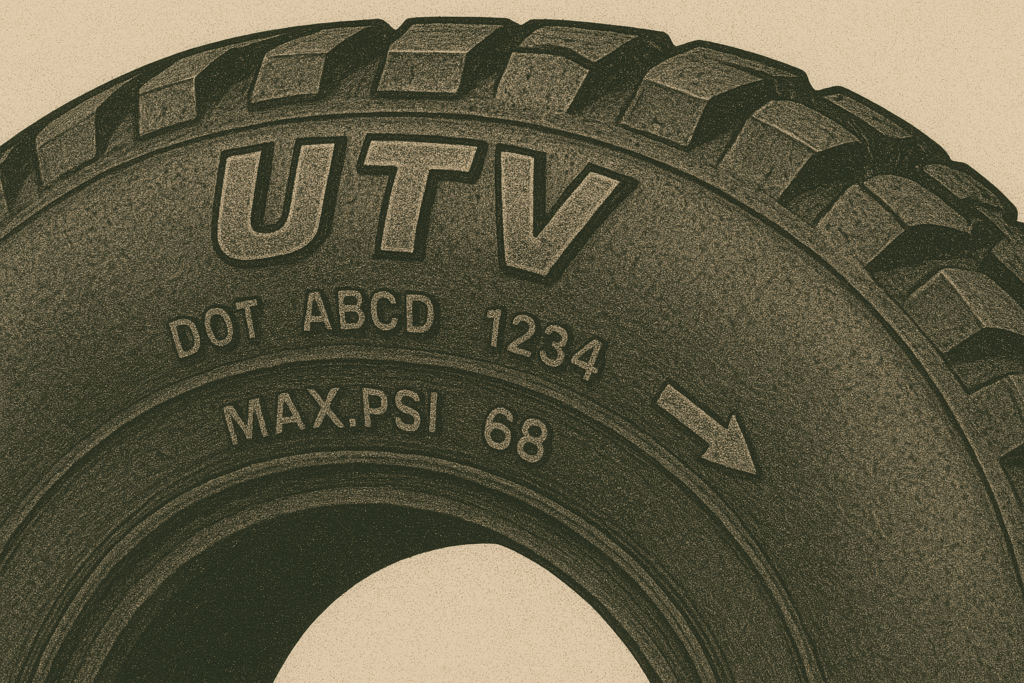
Conclusion: Empowering Your UTV Tire Choices
Deciphering UTV tire specifications might seem daunting at first, but by understanding the key numbers and letters, you gain invaluable knowledge that empowers you to make the best choices for your UTV and your riding adventures.
From the overall dimensions to the internal construction, ply rating, and tread pattern, each specification tells a story about the tire’s intended use and performance characteristics.
Choosing the right tires is one of the most impactful upgrades you can make to your UTV.
It directly affects your machine’s handling, traction, ride comfort, and overall safety.
So, the next time you’re looking at new tires, don’t just pick the ones that look cool.
Take a moment to read the sidewall, understand what those numbers and letters mean, and select tires that are perfectly matched to your riding style and the terrains you love to conquer.
Your UTV, and your riding experience, will thank you for it!
What’s the most important tire specification for your riding style?
Share your thoughts and questions in the comments below!
References
[1] SuperATV. ATV Tire Size Explained: A Comprehensive Guide.
[2] RAVEK. UTV Tire Size Guide: Everything You Need to Know.
[3] Partzilla. ATV and UTV Tire Sizes Explained.
[4] Discount Tire. *ATV and UTV Tire Size Explained.
[5] PRIORITY TIRE. ATV & UTV Tires Guide: All You Need to Know.
[6] Showdown ATV. Size Does Matter: How To Read ATV Tire Sizes.
[7] Polaris. Picking the Right Tires For your Off-Road Vehicle (ORV).
[8] MudThrowers. ATV Tire and Wheel Application Chart.
[9] UTV Source. Understanding UTV Wheel Measurements and Specifications.
[10] Cardo Systems. ATV Tire Size Explained.
[11] YouTube. How do ATV Tire Sizes Work?
[12] RAVEK. UTV Tire Size Guide: Everything You Need to Know.
[13] Partzilla. ATV and UTV Tire Sizes Explained.
[14] Priority Tire. ATV & UTV Tires Guide: All You Need to Know.

